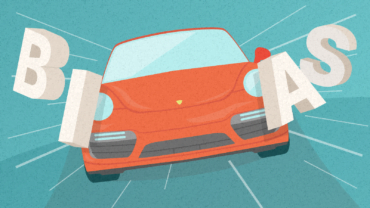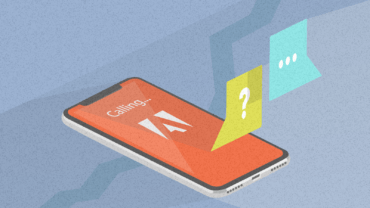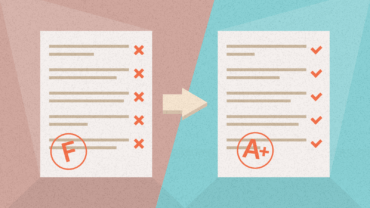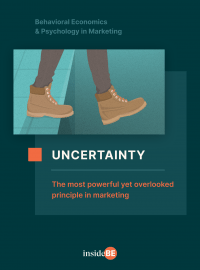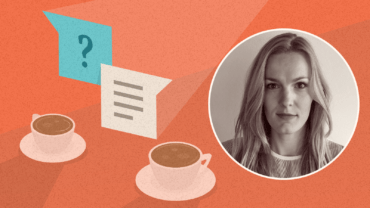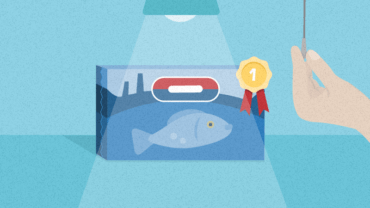Uncertainty – Top Sales and Customer Experience Killer

Perhaps you don’t even know you have an uncertainty problem. Many companies don’t. But uncertainty around your product or service makes customers pause in their tracks. Why does it happen and how can you fix it?
In this article you’ll discover:
- Why paying attention to your customers’ uncertainties is more important than focusing on benefits;
- What uncertainty tax is and how it impacts how we value things; and
- How to use other customers’ choices to alleviate concerns.
If you’re a bit stuck in your marketing efforts, or you’ve already tried different ways to motivate customers which looked good on paper but didn’t really work, and you wonder why then reading this article could be time well spent. You may find that instead of focusing solely on customer-centric communication packed with benefits, the number one question you should ask is why your customers are not taking you up on your offer.
Instead of focusing solely on customer-centric communication packed with benefits, the number one question you should ask is why your customers are not taking you up on your offer.
We’ve previously written more about why not to fixate on incentives in How to Understand What’s Stopping Customers From Doing What You Want Them To Do. This article zooms in on one particular barrier to changing customers’ behavior: uncertainty. We’ll explain how to identify it and offer handy strategies to remove uncertainties in different situations.
To better understand how uncertainty impacts the way we act, picture the following situation:
Two colleagues Liz and Jeff are sitting at a formal business dinner in Browns Brasserie & Bar. They’re both itching to switch from wine, which was chosen by group consensus, and order a cocktail. But they’re also concerned.

Discover ground-breaking ideas and fascinating solutions.
Why?
Because there’s uncertainty. For each of them, it means something different. Jeff is worried that the glass the cocktail comes in will make him look feminine. Liz is concerned that the glass will be packed with ice from top to bottom and make her proclivity to get sore throats flare-up (as it often does).
But Liz is feeling rather shy to ask how much ice the drink comes with – especially with her division leader sitting right across from her. Perhaps she should know. That is if she were a regular at this swanky restaurant.
Though Jeff and Liz have different concerns, this will ultimately lead them to the same decision – sticking to wine. It isn’t surprising.
Often, an uncertain outcome feels worse than a certain negative outcome.
It means that Liz will politely keep on gulping down the 1993 Zinfandel her boss keeps blabbering about, but which she doesn’t particularly enjoy, rather than risk a sore throat or embarrassing herself by admitting she doesn’t know something, or that she’s “fussy” about the amount of ice in her drink.
Uncertainty can prevent people from getting something they want if they’re worried about a particular part of the offer. And by not addressing customers’ uncertainties, companies miss out on conversions they could otherwise get – without flash sales or ‘twofers’.
Uncertainty can prevent people from getting something they want. And by not addressing customers’ uncertainties, companies miss out on conversions they could otherwise get.
Though Liz and Jeff are fictional, the story is real. Mitchells & Butlers, a UK company that owns a chain of Browns Brasseries & Bar, found that their customers had concerns about glassware because its menu didn’t feature visuals of glasses.
They hired Cowry Consulting to redesign the menu to increase average customer spend not by changing prices or items on the menu, but simply by changing how the menu looked. Including visuals for glassware was just one of the simple yet significant changes which tripled the goal target set by Mitchells & Butlers. You can read the whole case study here.
Why is uncertainty so bad?
According to author and professor Jonah Berger, uncertainty is one of the top five barriers to changing minds that he lists in his page-turner on obstacles – The Catalyst: How to Change Anyone’s Mind.
Uncertainty
Uncertainty is a situation when your customer has incomplete or missing information. A situation when their questions, concerns, and fears aren’t answered.
Uncertainty is one of the worst feelings a customer can have. As a result, they’ll avoid situations that cause this feeling, abandon the buying process and leave dissatisfied.
But let’s be realistic, uncertainty is a natural companion to any change. Even if the change is inconsequential (like getting a pair of new shoes or a subscription), it involves a certain degree of uncertainty. The problem is, the more uncertainty there is, the less interested we are in making that change.
Worse yet, the more ambiguity around the product or service, the less valuable that new thing becomes. This decrease in value is called “uncertainty tax”. That’s why for customers to choose something new, the option they’d be willing to switch to can’t just be better, it has to be significantly better.
The more ambiguity around the product or service, the less valuable that new thing becomes. This decrease in value is called “uncertainty tax."
You’re probably thinking this looks pretty bleak. So is there hope? Yes! When you ask customers to do something or take on something new, it’s important to address all their major concerns before these concerns have a chance to stop them in their tracks.
To put it bluntly: your offer can have a hundred benefits, but if there’s one concern or question to which the customer doesn’t get the answer, they may not take you upon it. Conversely, if your business pinpoints and addresses all the customers’ concerns and questions, one good reason to buy can be more than enough.
Uncertainties in the sales process
In retail (and especially in eCommerce) uncertainties are usually easier to spot. Here the most obvious concerns are things like: “will it be a good fit and if not what do I do?”
But uncertainty can act as a major show-stopper in any sales funnel. That’s why the most successful companies like Netflix, Paypal, or Zara adjust their sign-up process & checkout funnels to eliminate uncertainties at each step of the way. If it’s hard for you to think of why a customer might not volunteer for a free thing, check out this detailed play-by-play on how Netlifx clears away concerns that might lead potential customers to pause or leave its free-trial signup process.
As you can see below they don’t solely focus on the benefits (ad-free, multiple screens, option to download) but alleviate potential concerns, such as whether a user can cancel at any time and won’t be charged without being notified first, by putting them front and center in their registration funnel.
Netflix doesn't solely focus on the benefits, but addresses customer concerns first by putting them in the center of the registration process.
Source: Netflix
Uncertainties about the product
The second type of uncertainty includes concerns that are tied to the product itself (a customer either doesn’t know how to use it or has concerns about using it). This can be fixed either by changing the communication around the product or changing its design as Tampax did. You’ll learn more about Tampax later in this article.
How to identify customers’ uncertainties
Since uncertainty is widespread, it means that before you start thinking of ways to motivate customers to engage with you or to buy from you, you have to begin by understanding their main uncertainties and dealing with them.
Before you start thinking of ways to motivate customers to engage with you or to buy from you, you have to begin by understanding their main uncertainties.
Businesses often think they do enough to clear away lingering questions and doubts; they train customer-facing & digital staff to end the conversation by asking whether a customer has any further questions. They say “NO” and then it’s solved, right?
Actually, finishing on that note is damaging and can affect how the customer looks back on the conversation, leading them to recall it as less pleasant than it actually was.
So how can you tease out uncertainties and what to be mindful of?
Step 1: Don’t expect that the customer will always ask
Just asking customers whether they have further questions doesn’t solve the uncertainty problem. Especially when clearing something up involves admitting to things customers are embarrassed about (or feel like they should already know).
Take the example of the trust campaign a prominent UK bank ran. The bank thought people didn’t trust financial institutions and wanted to increase customers’ confidence in their expertise.
They thought the right solution would be to show clients how superior they were compared to their competitors. So they designed new apps with state-of-the-art features to allow their clients to manage their money quicker and more efficiently.
But the results were soul-crushing. Customer churn increased even more because the real issue was not that people didn’t trust banks, it was that they didn’t trust themselves in managing their money!
But for customers to admit they only knew two things about their account – when they got paid and when they went into debt – was embarrassing.
Especially since the added bells and whistles in the app interface made them feel like everyone else knew what they were doing. This presumption that everyone else was capable also made it harder to acknowledge uncertainty.
This isn’t surprising. How many times have you left a meeting where everyone nodded all clear and yes to what the next steps were, only to find during your later water cooler chat that your colleagues were just as confused as you were.
So knowing the impact the behavior of others had on clients, the bank decided to use this to acknowledge it was OK to not know how to manage finances and that, in fact, most other people didn’t know how to do it either.
The bank decided to use this to acknowledge it was OK to not know how to manage finances and that, in fact, most other people didn't know how to do it either.
The key message of the bank’s subsequent communication was: “It’s common not to know much about finances, you shouldn’t feel bad about it. But this is how we, as a bank, can help you build that confidence.”
They focused on subtracting complexity instead of creating more robust tools “to go digital” which only undermined customers’ confidence. Agents were encouraged to admit that they were once also quite oblivious about finance in order to create a sense of unity and liking. In the course of 18 months, the bank reduced churn by 11% and increased market share by 6%.
Step 2: Use a fresh pair of eyes & talk to your staff
Perhaps you’re in too deep to see these “obvious” things that might cause concerns and you need a fresh pair of eyes. Luckily any friend can play the role of a prospective customer and point out some of the most prominent sources of doubts or concerns.
Or you can look at your existing campaign, promo card, or email and scrutinize it. Contemplate what the unanswered questions of your customers could be, even after reading it.
To identify the most prevalent sources of uncertainties (which customers are willing to admit) talk to call center agents and point-of-sale staff, analyze what people ask in forums, or take a look at the most common questions asked in live chat.
To identify the most prevalent sources of uncertainties talk to call center agents and point-of-sale staff, analyze what people ask in forums, or take a look at the most common questions asked in live chat.
It could be anything from wondering about how high the insurance indemnity is or how easy it is to cancel a commitment that is initially free, to whether a perfect gift found during frantic late Christmas gift shopping will make it in time. If many people keep wondering about the same thing, you probably aren’t communicating it right.
Step 3: Be prepared to update the list of concerns
Uncertainties (or rather how consequential they are on customers’ behavior) can change over time. You may then find that even though you have cleared away the major concerns, you still have to tackle the bottom-tier ones.
No other industry knows this better than female hygiene products, where women’s concerns and uncertainties have pivoted over time.
In the past, concerns centered on the product features while a woman was using it, such as comfort and leakage. Once these were off the table, thanks to improvements in technology and massive campaigns featuring ecstatic women strolling around in white pants and playing beach ball, manufacturers realized there were other challenges to tackle.
These more intricate concerns, they discovered, revolved around what happens before a woman even makes it to the bathroom. The major concern was a shame – what if someone sees me strolling around the office with a tampon in hand? If you want to appreciate the whole gravity of this worry, check out this funny skit from SNL on what peculiar objects women would rather be seen passing around.
A designer’s response? Tampax pocket. A clever product design feature, which ensured the product wouldn’t pop up from a woman’s pocket at the most inconvenient of times.
It enabled manufacturers to sell more premium products because, prior to the design change, some women would still pick products of inferior quality or comfort just because they were less conspicuous. (e.g. tampons with no applicators).
How to remove uncertainties
Use others as reassurance
One particular concern which causes online clothes shopping conversions to plummet is worries about the right fit. Here’s how Zara used social proof at the end of its sales funnel to eliminate this problem.

Source: Zara
Social Proof
Social proof is our tendency to be influenced by what others do, how they think and behave. Social proof works particularly well in situations of uncertainty.
Notice that they didn’t use a conventional way of leveraging social proof such as customer reviews or recommendations. They used the choices of others to reassure the customer that the size they had been recommended would be the right fit for them too.
Click here to read more about their unique approach to determining the right size.
Use concrete and simple messaging
If your deal is (objectively) great, but your customers are still not flocking towards it, rather than pushing even harder on the gas pedal – which could look like repeating the key benefits in your email and reminder email and the last call email – consider what is the handbrake (uncertainty) that you first need to remove.
A similar approach worked nicely in the direct email campaign of a commercial bank Mindworx worked with. The goal was to get more debit card owners who qualified for a special complimentary service (free travel insurance for a year) to sign up for it.
Even though there was no objective downside to this deal, people weren’t signing up in the numbers the company had hoped for. It turns out they still had concerns.
So the new version of the email addressed these and reassured bank clients that they would not forget to opt-out (and get charged for an extra year) because they would be notified when the free period was about to end. This, combined with other behavioral changes, helped to increase the take-up rate of travel insurance by 300%. Watch the whole case study here.
To conclude
When concerns are not resolved, customers choose to stick to what they’ve already been doing or what they already know. Uncertainty puts the brakes on and hands over the steering wheel to inertia.
Rather than looking for reasons why it might be a bad idea to not take action or try that new thing, people will more readily come up with reasons to justify why they avoided the risk.
Do your best to identify what customers’ questions and concerns are and tackle them head-on before they have a chance to impact their decisions.
Key takeaways:
- Don’t just broadcast benefits, understand reservations. In the case of the bank, the uncertainty was not knowing how to take advantage of the different features of the apps (and what it meant). The company could push these benefits for years to no avail; it took understanding what the problem was to fix it.
- Check your message for clarity. Friends, family members, first dates, anyone can be your guinea pig. See how they interact with your landing page, job posting, or checkout page. Do they understand what you want them to do and how? Is your message correctly understood? Does it speak to not just the value but also possible concerns and reservations? Mark down the additional questions they have – those are the ones you need to answer.
- Address your customers’ uncertainties at the right time. Think about where in their decision-making process a customer would benefit from seeing the choices other people made. Is it before they even choose a product, or later in the sales funnel (as in the case of ZARA)?
- Be transparent about trepidation. If there’s an elephant in the room, omitting it from your communication won’t make it go away. It will make people pause in their tracks. Commitment concerns are a major deal breaker so make sure you always answer the question: how can I step away from it if I don’t like it?
